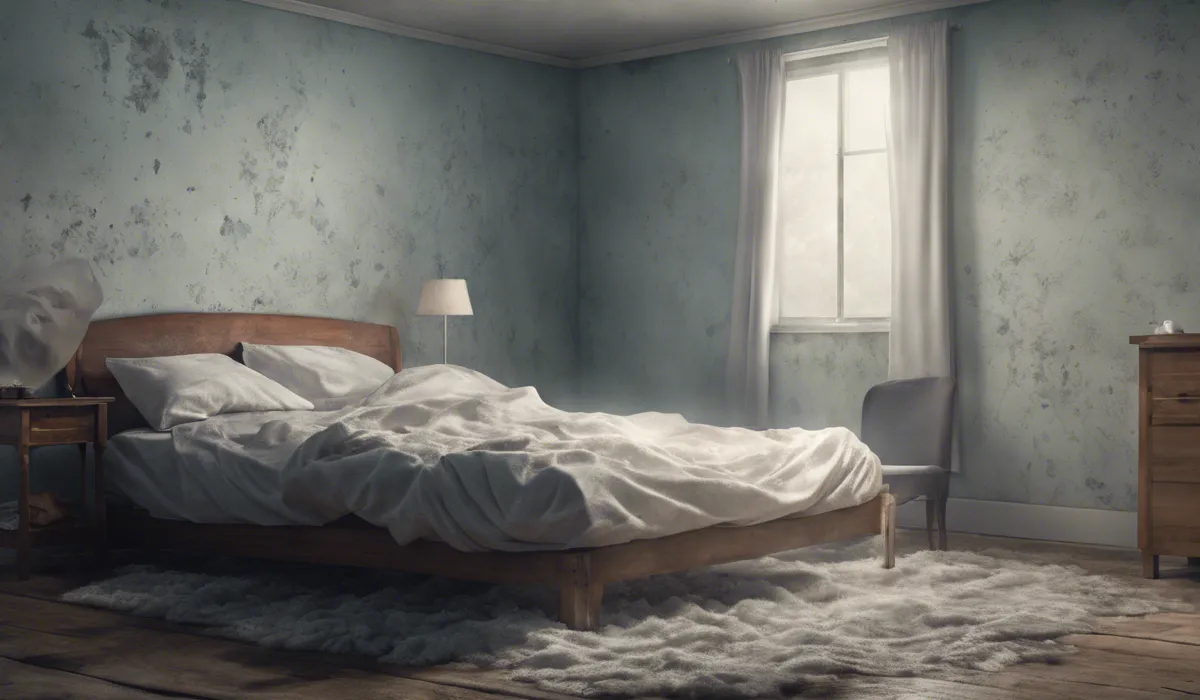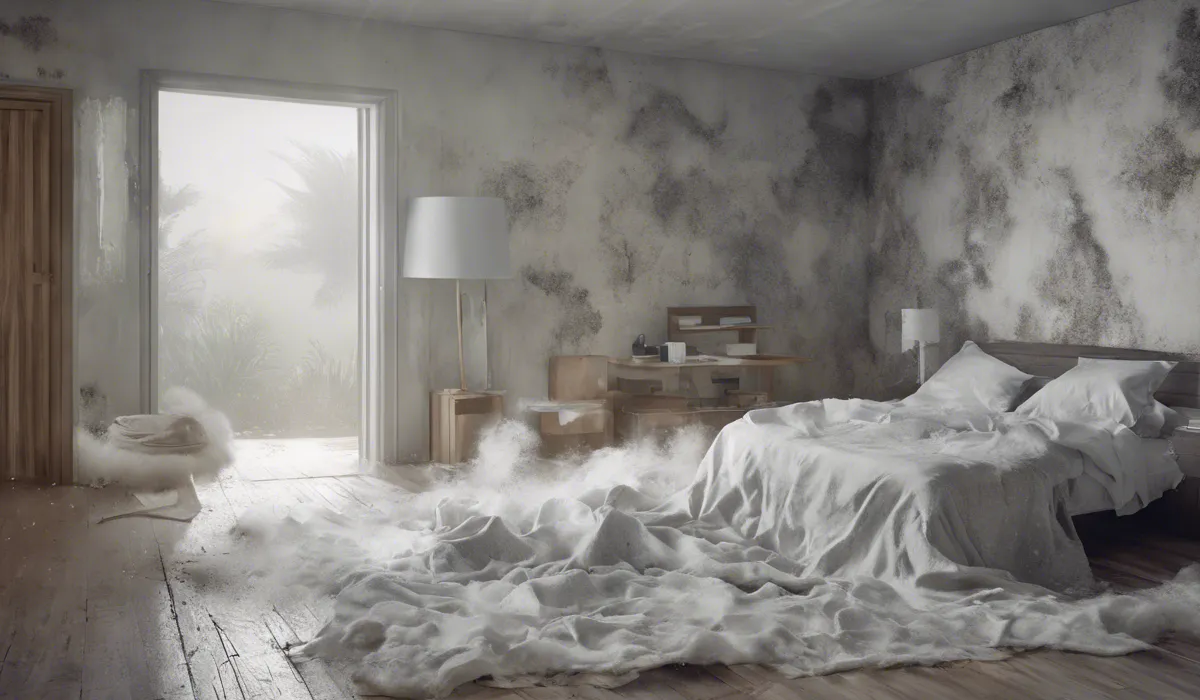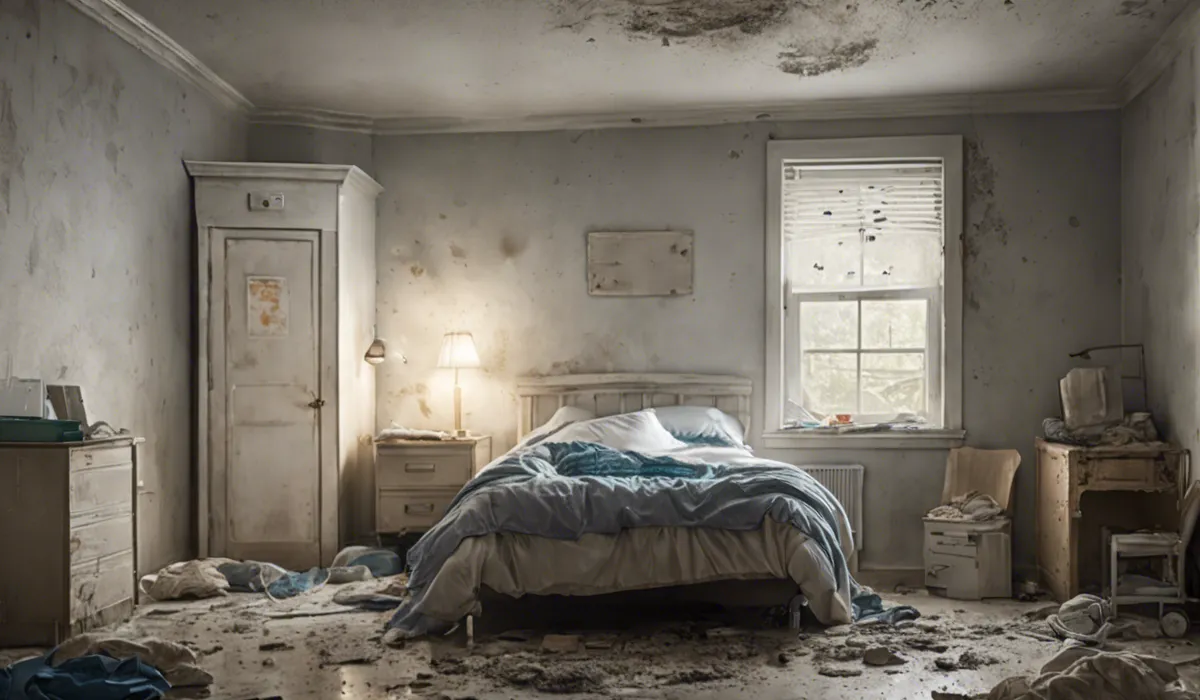Sleeping in a room with mold is not directly lethal, but long-term exposure can exacerbate respiratory conditions, potentially leading to severe health issues. Immediate death from mold exposure, however, is extremely rare.
Health Risks of Mold Exposure

Understanding Mold and Its Varieties
Mold is a type of fungus that grows in filaments and reproduces by forming spores that can travel through the air.
Common types of mold found in homes include Aspergillus, Cladosporium, and Stachybotrys, often called black mold.
These molds can be found on walls, ceilings, and other surfaces, especially where moisture is present.
Bedroom Conditions Favoring Mold
Mold thrives in moist environments. Bedrooms become ideal breeding grounds when there’s high humidity, poor ventilation, or leaks from windows or pipes.
Such conditions must be addressed promptly to keep the room safe and healthy.
Immediate Effects of Mold Exposure
Some people may experience allergic reactions like sneezing, runny nose, or skin rashes after short-term exposure to mold. Irritation of the eyes and skin can also occur, which is often uncomfortable but not life-threatening.
Long-Term Health Consequences
Extended exposure to mold can lead to serious health problems like asthma or other respiratory issues.
Some molds produce mycotoxins that can cause toxicity in the body, leading to immune system problems over time.
High-Risk Groups for Mold Effects
Children, the elderly, and those with pre-existing health conditions like lung diseases or weakened immune systems are more at risk.
It’s crucial to keep their living environments free of mold to prevent additional health complications.
Can Mold Exposure Be Lethal?

Health Issues from Mold
While immediate death from mold is rare, it can cause significant health issues. Statistics show that mold can exacerbate conditions like asthma, potentially leading to more severe health problems if not managed properly.
Mycotoxins and Severe Health Outcomes
Mycotoxins are toxic substances produced by certain molds. They can have severe effects on human health, including respiratory distress and, in extreme cases, organ damage. Their role in long-term exposure is a critical aspect of mold-related health risks.
Severe Incidents Leading to Hospitalization
There have been real-life cases where individuals have been hospitalized due to severe mold exposure.
These instances often result from prolonged contact with high concentrations of mold, especially in poorly ventilated or damp environments.
Mold Mortality Studies
Scientific research into the mortality rates associated with mold exposure is ongoing. While direct links to death are uncommon, the connection between long-term exposure to toxic mold and serious health issues is firmly established.
Prevention and Remediation Strategies

Preventing Mold in Bedrooms
To prevent mold, ensure your bedroom has good ventilation and controlled humidity levels.
Use dehumidifiers if necessary and fix leaks promptly. These steps are essential for maintaining a healthy environment.
Identifying Mold at Home
Be on the lookout for mold’s telltale signs, such as musty odors or visible growth on walls and ceilings. Early detection is key to managing a mold problem before it becomes more severe.
Choosing Between Professional or DIY Removal
Small mold infestations can often be handled with DIY methods. However, larger, more serious mold problems should be dealt with by professionals who have the equipment and expertise to safely remove it.
Safety Measures When Handling Mold
When dealing with mold, wearing protective gear like gloves and masks is essential. Use safe cleaning agents and follow recommended procedures to protect your health and prevent the spread of spores.
Knowing When to Call Experts
If you’re unsure about the severity of a mold issue or how to address it, it’s best to consult with a professional.
They can provide guidance and services to ensure your home remains a safe haven from mold-related risks.
Regular Home Maintenance to Prevent Mold
Regular home maintenance, including checking for leaks, ensuring proper insulation, and cleaning ventilation systems, can prevent mold growth.
A proactive approach will keep your living space healthy and mold-free.
FAQs About Sleeping in a Room with Mold
Can sleeping in a room with mold lead to immediate death?
Immediate death from mold exposure in a room is extremely rare; however, it can contribute to serious health issues over time.
Is it safe to sleep in a room that has mold?
No, it is not safe to sleep in a room with mold as it can exacerbate respiratory issues and lead to long-term health complications.
What are the potential health risks of long-term exposure to mold?
Long-term exposure to mold can lead to respiratory conditions, allergic reactions, and other health issues such as asthma or chronic sinusitis.
Should people with respiratory conditions sleep in moldy rooms?
No, individuals with pre-existing respiratory conditions should avoid sleeping in moldy rooms as mold can further aggravate their condition.
How can one mitigate the risks of sleeping in a room with mold?
To mitigate risks, one should remove the mold promptly and ensure proper ventilation and humidity control in the room to prevent mold growth.
Final Thoughts
While sleeping in a room with mold doesn’t directly cause immediate death, it’s crucial to recognize that long-term exposure can significantly harm respiratory health.
Chronic presence in a moldy environment can lead to serious health complications over time, emphasizing the importance of mold remediation for maintaining good health.
